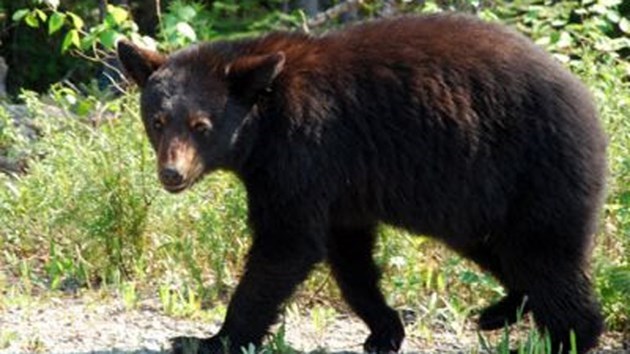Every year at this time we get reports in the North Bay area of more bears being seen in urban areas looking for a good meal.
See: Firefighters and MNRF join forces to rescue bear cub
And: Bear captured in north end of the city
The North American Bear Centre is a good place to find out more about bears emerging from hibernation.
But just seeing a bear does not necessarily mean that there is an emergency.
Here's who to contact in case of a bear encounter.
Non-emergency situations:
Call the tip line Bear Wise at 1 866 514-2327 if a bear:
- is inspecting garbage containers
- enters containers of waste or food
- is in a tree
- smashes a bird feeder or tips over a barbecue
- is seen in a field.
This line operates 24 hours a day, seven days a week, from April 1 to November 30. Staff will advise you about the behavior of the bears, means to avoid conflicts with them, and eliminate what attracts them to your property.
Emergencies
Call 911 or your local police department if a bear poses an immediate danger threatening or behaving aggressively, for example:
- on entering school grounds during school hours
- following someone and lingering on the scene
- entering or attempting to enter a residence
- wandering in public places
- killing livestock or pets and lingering on the scene.
The police are the first responders in any emergency. At the request of the police, during daylight hours, the Ministry of Natural Resources and Forestry will help in emergency situations. Bears remember their last source of food and will return there if they are hungry. Sometimes they will travel up to one hundred kilometres.
If you encounter a bear. Stop. Do not panic. Remain calm.
Take these steps:
- do not try to get closer to the bear for a better look or picture
- make sure the bear has a clear escape route — don’t corner a bear
- always watch the bear and slowly back away until the bear is out of sight
- get inside, if you are near a building or vehicle
- leave the area, if you are berry-picking, hiking, camping, jogging or cycling
- if you are with others, stay together and act as a group
- if the bear does not get closer to you, slowly back away, talking to the bear in a quiet, monotone voice
Do not:
- scream
- turn your back on the bear
- run
- kneel down
- make direct eye contact
- climb a tree
- retreat into water or try and swim — a bear can do these things much better than you
A webcam in Glacier National Park caught this sleepyhead coming out of hibernation in a cottonwood tree, where he made his den for the winter. Park officials say bears will start to rejoin the living in the spring as food becomes available. Courtesy Inside Edition.



